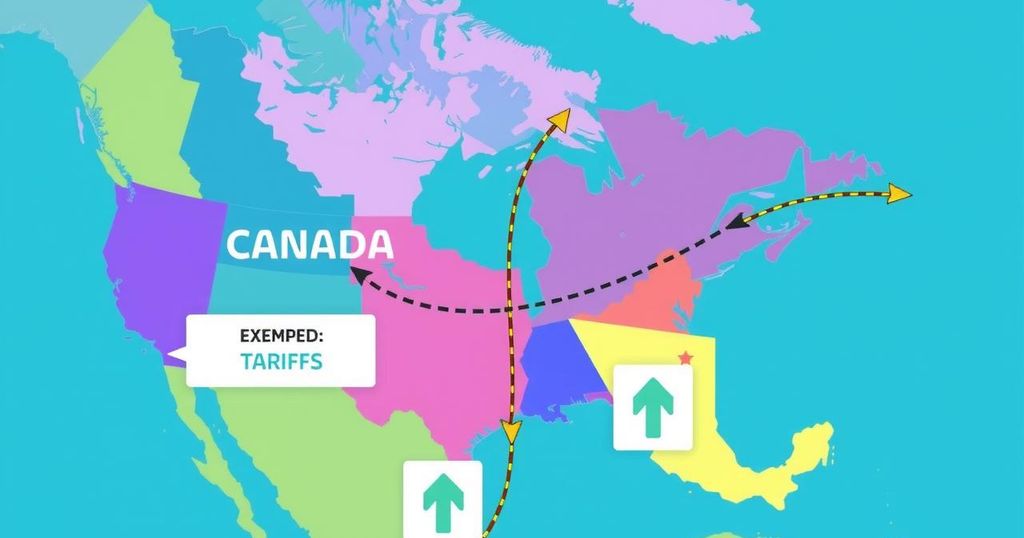Canada and Mexico Escape Trump’s April 2 Reciprocal Tariffs

On April 2, 2024, President Trump announced reciprocal tariffs targeting several countries, but Canada and Mexico were exempted due to existing duties. They will continue managing established tariffs but may face new charges. Other nations will encounter various tariff rates, with China facing the largest at 34%. This tariff strategy aligns with Trump’s campaign promises to modify trade practices.
On April 2, 2024, President Donald Trump announced sweeping reciprocal tariffs, claiming the U.S. has been exploited by other nations. Canada and Mexico were notably exempted from these new tariffs, which ranged from 10% to 45%. Their exemption, however, does not indicate a complete absence of tariffs, as they still face existing duties, particularly 25% tariffs on certain imports and additional charges on automotive products.
Canada and Mexico’s avoidance of the new tariffs is attributed to already established duties on their goods. For instance, existing 25% tariffs related to fentanyl, along with 10% tariffs on Canadian energy and potash, remain in effect. This arrangement allows goods entering the U.S. under the US-Mexico-Canada Agreement to continue without the new tariffs.
Despite their exemption from the latest tariffs, any future negotiations may challenge this status, as the two countries might encounter the baseline tariff rates should agreements not be reached. Canadian Prime Minister Mark Carney emphasized the intent to counter these tariffs, asserting a commitment to protecting workers. Mexican President Claudia Sheinbaum’s response is anticipated during her upcoming press conference.
Notably, other nations, such as Russia, Cuba, and North Korea, are not included in Trump’s new tariff list due to existing sanctions that inhibit significant trade. The latest tariff rates also affect several countries differently; for instance, India faces a 26% tariff, while Vietnam is subjected to a 45% tariff. China, facing the largest trade surplus with the U.S., will incur a 34% tariff, potentially rising to 54% when combining existing duties. Trump’s tariff strategies form a significant part of his campaign rhetoric leading up to the 2024 election, promising stringent measures against Chinese imports.
In summary, Canada and Mexico have avoided Donald Trump’s April 2 reciprocal tariffs due to existing tariffs already placed on their imports. While exempt from the new levies, they continue to be subject to previously established duties. The situation highlights the complexities of international trade relations and the potential for further negotiations that could impact tariff statuses. Trump’s broader tariff strategy indicates a critical focus in the lead-up to the 2024 election, emphasizing trade reform as a political pillar.
Original Source: www.hindustantimes.com







